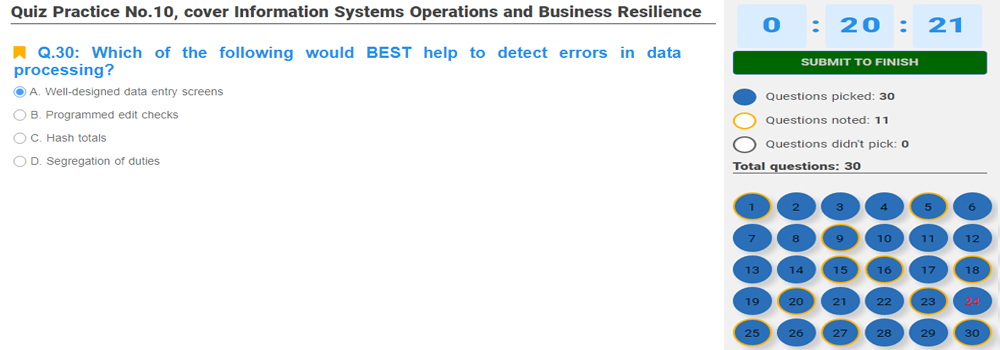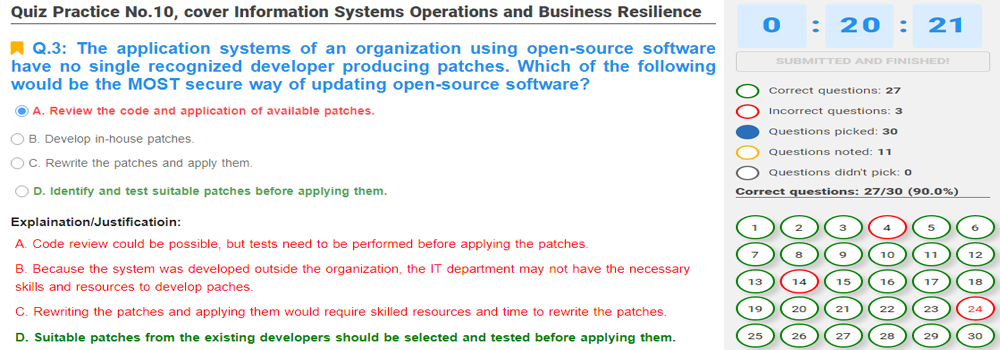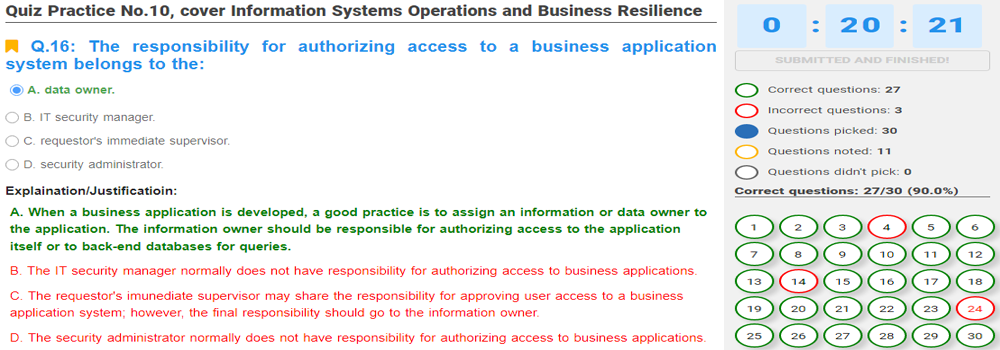SOME NOTES ABOUT ORACLE DATABASE 19C RAC, ASM, AND GRID INFRASTRUCTURE ADMINISTRATION:
Oracle Database 19C RAC, ASM, and Grid Infrastructure Administration [1Z0-078] is an important and mandatory certification on your path to becoming an expert in your field.
To get this certificate, you need to firmly and confidently grasp the content listed below. Then, you need to pass the exam directly on ORACLE's system. This exam has a duration of 120 minutes, with 77 questions. You need to answer correctly at least 65% of the total questions on the exam.
Below are the contents that you need to grasp firmly and confidently before registering to take the exam on ORACLE's system:
1. RAC Databases and Architecture.
1.1. Describe the benefits of Oracle RAC.
1.2. Explain the necessity of global resources.
1.3. Describe global cache coordination.
2. Installing and Configuring Oracle RAC.
2.1. Install the Oracle database software.
2.2. Create a cluster database.
2.3. Convert a single instance Oracle database to RAC.
3. Administering Oracle RAC.
3.1. Define redo log files in a RAC environment.
3.2. Define undo tablespaces in a RAC environment.
3.3. Start and stop RAC databases and instances.
3.4. Modify initialization parameters in a RAC environment.
4. Managing Backup and Recovery for RAC.
4.1. Configure the RAC database to use ARCHIVELOG mode and the fast recovery area.
4.2. Configure RMAN for the RAC environment.
5. Managing Global Resources.
5.1. Explain the need for global concurrency control.
5.2. Describe the Global Resource Directory.
5.3. Explain how global resources are managed.
5.4. Explain global enqueue and instance lock management.
5.5. Explain global buffer cache management.
5.6. Explain use of Affinity to reduce Global Resource Contention.
6. RAC Database Monitoring and Tuning.
6.1. Identify RAC-specific tuning components.
6.2. Determine RAC-specific wait-events, global enqueues and system statistics.
6.3. Implement the most common RAC tuning practices.
6.4. Use the Cluster Database Performance pages.
6.5. Use the Automatic Workload Repository (AWR) in RAC.
6.6. Use Automatic Database Diagnostic Monitor (ADDM) in RAC.
6.7. RAC Database SGA Runtime Management.
7. Managing High Availability of Services.
7.1. Configure and manage services in a RAC environment.
7.2. Use services with client applications.
7.3. Configure services aggregation and tracing.
8. Managing High Availability for Connections and Applications.
8.1. Configure client-side connect-time load balancing and failover.
8.2. Configure server-side connect-time load balancing.
8.3. Use the Load Balancing Advisory (LBA).
8.4. Explain the benefits of Fast Application Notification (FAN).
8.5. Configure Transparent Application Failover (TAF).
8.6. Co-location Tag for Client Routing.
8.7. Transparent Application Continuity.
8.8. Dynamic Services Fallback.
9. Upgrading and Patching Oracle RAC.
9.1. Plan for rolling patches and rolling updates.
9.2. Install a patchset with the Oracle Universal Installer (OUI) utility.
9.3. Install a patch with the opatch utility.
10. Managing Oracle RAC One Node.
10.1. Convert an Oracle RAC One Node database to a RAC database.
10.2. Use DBCA to convert a single-instance database to a RAC One Node database.
11. Using Oracle Database Quality of Service Management (QoS).
11.1. Explain the purpose and benefits of using QoS.
11.2. Explain the operation of QoS.
12. Using Multitenant Architecture in a RAC Environment.
12.1. Describe the multitenant architecture in RAC and non-RAC environments.
12.2. Create a RAC multitenant container database (CDB).
12.3. Create a pluggable database (PDB) in a RAC CDB.
12.4. Use the default CDB and PDB services.
12.5. Create PDB services to associate PDB services with server pools.
12.6. Automated PDB Patching and Relocation.
13. Introduction to Clusterware.
13.1. Explain the principles and purposes of clusters.
13.2. Describe Cluster hardware best practices.
13.3. Describe how Grid Plug and Play affects Clusterware.
14. Oracle Clusterware Architecture.
14.1. Explain the Oracle Clusterware architecture.
14.2. Describe Oracle Clusterware startup details.
15. Flex Clusters.
15.1. Explain the Flex Cluster architecture and components.
15.2. Describe the effect of node failure in a Flex Cluster.
16. Grid Infrastructure Installation Planning and Pre-Tasks.
16.1. Plan for Grid Infrastructure installation.
16.2. Verify system and network requirements.
16.3. Create groups and users.
16.4. Create directories.
17. Grid Infrastructure Installation.
17.1. Install Grid Infrastructure.
17.2. Verify the installation.
17.3. Configure ASM disk groups.
17.4. Optional Install for the Grid Infrastructure Management Repository.
18. Managing Cluster Nodes.
18.1. Perform the prerequisite steps to extend a cluster.
18.2. Delete a node from a cluster.
18.3. Use DBCA to ADD new nodes to extend the cluster.
19. Traditional Clusterware Management.
19.1. Perform day to day Clusterware administration tasks.
19.2. Perform Oracle Cluster Registry (OCR) backup and recovery.
19.3. Manage network settings.
19.4. Explain the scope and capabilities of what-if command evaluation.
. Secure Cluster Communication.
20. Policy-Based Cluster Management.
20.1. Explain the architecture and components of policy-based cluster management.
20.2. Administer server categorization.
20.3. Administer a policy set.
20.4. Activate a policy.
21. Upgrading and Patching Grid Infrastructure.
21.1. Explain the types of patches and upgrades available.
21.2. Plan for rolling patches and rolling upgrades.
21.3. Compare software versions with the active version.
21.4. Install a patchset with the Oracle Universal Installer (OUI).
21.5. Install a patch with the opatch utility.
21.6. Zero-Downtime Oracle Grid Infrastructure Patching.
22. Troubleshooting Oracle Clusterware.
22.1. Locate the Oracle Clusterware log files and use diagcollection.pl.
22.2. Enable resource debugging.
22.3. Enable component-level debugging.
22.4. Troubleshoot the Oracle Cluster Registry (OCR) file.
23. Making Applications Highly Available with Oracle Clusterware.
23.1. Explain the hivh availability components of Oracle Clusterware.
23.2. Explain policy-managed and administration-managed databases.
23.3. Create an application Virtual IP (VIP).
23.4. Manage application resources.
24. Overview of ASM.
24.1. Explain the Automatic Storage Management (ASM) architecture.
24.2. Describe the components of ASM.
25. Administering ASM Instances.
25.1. Explain and apply initialization parameters for ASM instances.
25.2. Manage ASM instances and associated processes.
25.3. Monitor ASM instances using the V$ASM dynamic performance views.
26. FLEX ASM.
26.1. Describe the architecture and components of Flex ASM.
26.2. Install and configure Flex ASM.
26.3. Manage Flex ASM.
27. Administering ASM Disk Groups.
27.1. Create and delete ASM disk groups.
27.2. Set the attributes of an existing ASM disk group.
27.3. Perform ongoing maintenance tasks on ASM disk groups.
27.4. Explain key performance and scalability considerations for ASM disk groups.
28. Administering ASM Files, Directories and Templates.
28.1. Use client tools to access ASM files.
28.2. Describe the format of a fully qualified ASM file name.
28.3. Explain how ASM files, directories and aliases are created and managed.
28.4. Describe and manage disk group templates.
29. Administering Oracle CloudFS.
29.1. Administer ASM Dynamic Volume Manager.
29.2. Manage ASM volumes.
29.3. Implement ASM Cluster File System (ACFS).
29.4. Use ACFS snapshots.
30. Oracle CloudFS Advance Topics.
30.1. Configure ACFS auditing.
30.2. Implement ACFS encryption.
30.3. Configure and manage ACFC replication.
30.4. Implement ACFS tagging.
30.5. Configure High Availability NFS.
GOODLUCK TO YOU!!!




